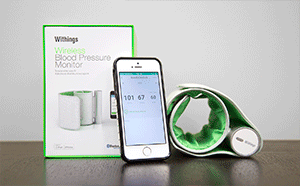 Welcome to the 40th Edition of Health Care Social Media Review. Jack Benny never made it past 39, but we did.
Welcome to the 40th Edition of Health Care Social Media Review. Jack Benny never made it past 39, but we did.
 Welcome to the 40th Edition of Health Care Social Media Review. Jack Benny never made it past 39, but we did.
Welcome to the 40th Edition of Health Care Social Media Review. Jack Benny never made it past 39, but we did.
I called for submissions addressing the issue of plenty in health care, since this is the 40th edition, and since 40 is shorthand for plenty or many in several traditions. (Think 40 days or 40 years in any number of Judeo-Christian narratives.)
In addition, while we have seen once again in recent weeks that some in the Tea Party may differ, we have agreed as a society that health care is a social good and we are doing our darnedest to continue to implement the reforms set in motion by Obamacare.
So let’s call this the Good & Plenty edition.
On the Good front: Fard Johnmar asks an important question about the implementation of a key social good: HealthCare.gov’s Security Issues: Did Government Put ePatients’ Health Data Privacy at Risk? It’s a question worth answering, because Fard notes that the engaged patients most likely to shop for insurance on healthcare.gov are also those more likely to care more about privacy than the average bear.
Turning health data into health narrative: Dr. Leslie Saxon on what’s next in digital health Bottom line: what makes digital sticky is social. Deanna Pogoreic interviews Saxon, of USC’s Center for Body Computing, at Med City News. (Good & Plenty is also sticky, or can be, after it’s been in your sweaty pocket for a while.)
Social Threat Protection Now Critical for the Health Industry. Social is a sword and a shield, Mark Langsfeld contends at Health Works Collective, creating threats and also servicing as an early-warning system.
One tool that many perceive as a threat to privacy and security is Google Glass. Heather Evans, however, is a surgeon and Glass Explorer. She and I were recently guests on a Google+ Hangout on Air focused on Google Glass, and Heather just had a post published in The Academic Surgeon entitled OK Glass, Take a Picture. Definitely a glass-half-full take on the subject.
Christina Thielst, at Christina’s Considerations, writes about Social Technologies: Meeting the Challenges of Population Health; there are plenty of ways that health care providers and health plans can use social tools to help improve the health of their patients. After all, population health doesn’t happen only on those rare occasions when patients are in a health care facility.
Taking a worldwide view of the good wrought by patient-curated records, John Lynn at EMR and HIPAA suggests that Patient Controlled Records Could Work Internationally.
Leonard Kish, in The Noise of mHealth: What WebMD’s Acquisition of Avado May Signal at HL7 Standards, writes about a recent report on the more than 40 thousand health apps out there (that’s plenty, no?), and in mulling over the acquisition considers a statement by Avado’s CEO:
Avado CEO Dave Chase has long argued that EHRs should be communications platforms, not billing systems, and a social component to health communications platform is not only about improved communications, but improved incentives for patients to get better. Could this be the secret sauce Harlow is looking for?
I was looking for the secret sauce to create sustainable patient engagement with mobile health apps in my HealthBlawg post, Mobile Health Apps: Pass the Secret Sauce, which, like Jane Sarasohn-Kahn’s Mobile health apps – opportunity for patients and doctors to co-create the evidence from Health Populi, was cited by Leonard in his post. I noted that we need to make these apps as addictive as the other apps that make us unable to untether ourselves from our smartphones.
Joe Kvedar, on the cHealth Blog, wrote Making Health Addictive II: Make it About Life (be sure to read the linked Part I, too), focusing on the addictive in smartphones and how we ought to be able to harness it for good. On a related note, Joe heads the Center for Connected Health; at its recent annual symposium, which I attended, the Center launched Wellocracy, a new service intended to empower individuals to self-manage their health. Leonard’s wide-ranging post also touched on the idea of patients collaborating socially on the sharing of personal health data, which I explored in a recent presentation and post.
John Sharp shares some useful thoughts and resources about using Social Media in Healthcare Quality on his blog, eHealth.
Spreading the health care social media gospel can be a full-time job. It is for Lee Aase, Director of the Mayo Clinic Center for Social Media (I am honored to serve on the Center’s external advisory board), who recently hosted the annual Social Media Summit at the Rochester, MN campus. In a “You Are There” move, some member presentations were streamed live and archived on You Tube. Check out the Live Streaming Member Meeting Presentations for a wide range of perspectives on how to make the most of health care social media.
Health Care Social Media Review has information about the next edition’s host and instructions on how to submit your posts for review in future editions.
(healthcare social media / shutterstock)








